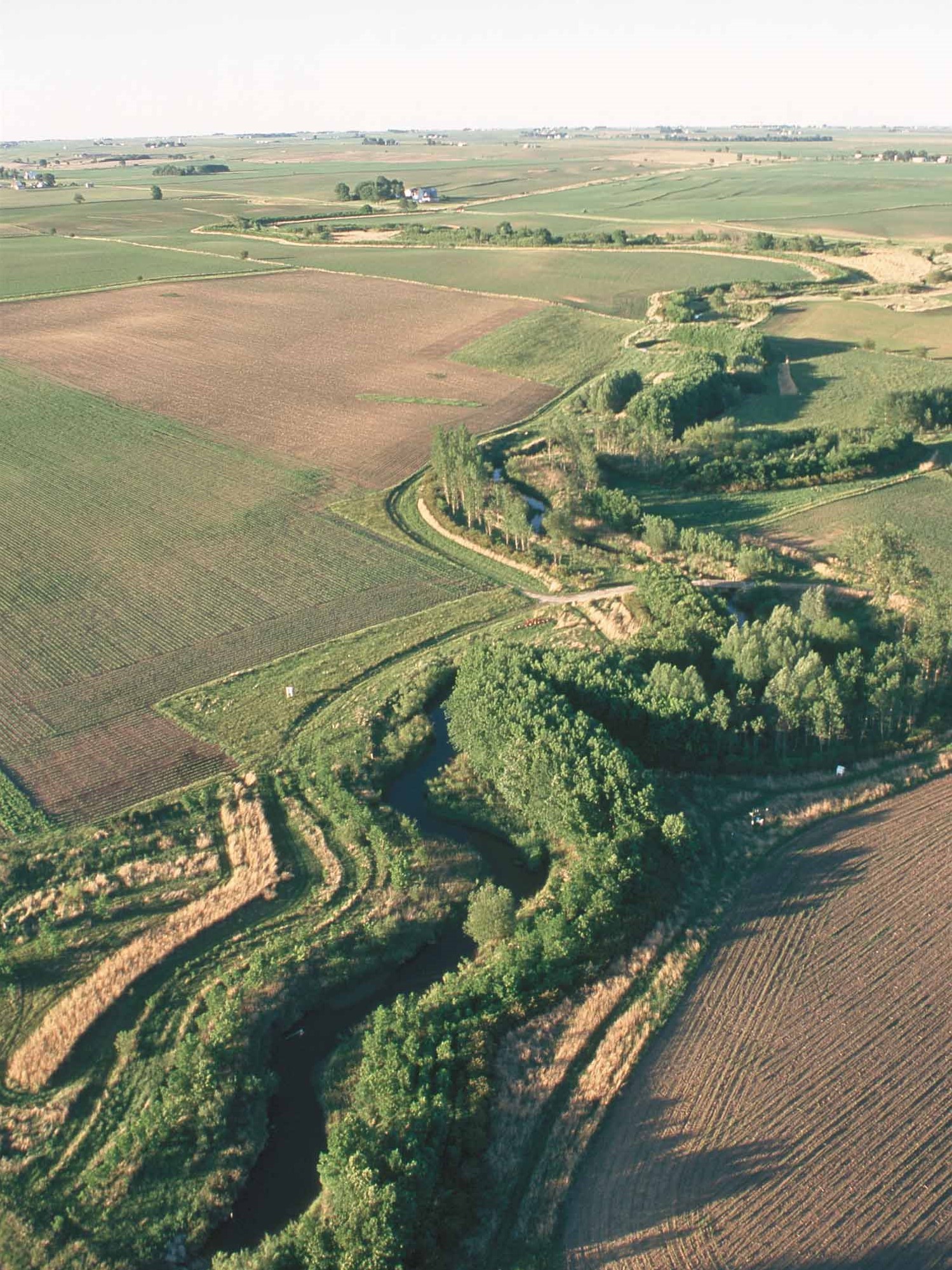
Riparian Buffers
Source Water Protection
A riparian buffer is an area along a shoreline, wetland or stream where development is restricted or prohibited. The primary function is to physically separate and protect the aquatic area from future disturbance or encroachment. A properly designed buffer can act as a right-of-way during floods, sustaining the integrity of aquatic ecosystems and habitats.
Monitor that no building or harmful recreational activity is occuring in the buffer area; Control weeds and invasive species; Mow if needed; Monitor vegetation in case restoration or replanting is necessary
The vegetation in the buffer zone should be native so it can tolerate the soil type and surrounding environmental conditions; Diverse vegetation will help with pollution reduction and soil stabilization; Buffers are more beneficial for areas with sheet flow rather than areas with concentrated flow. If runoff velocity is too high than the buffer cannot filter and absorb.
If a riparian buffer does not already naturally exist than the most expensive part of the buffer is the costs associated with site preparation, planting and establishment. Additional costs are associated with maintenance activities such as mowing or replanting. Not very expensive once buffer exists.
Improved water quality by allowing the water to flow to reduce so the buffer zone can absorb harmful substances; Reduce flooding damage by slowing the velocity of floodwaters and increasing flood storage capacity; Stabilies stream banks; Reduces shoreline erosion; Enhances wildlife habitat; Groundwater recharge